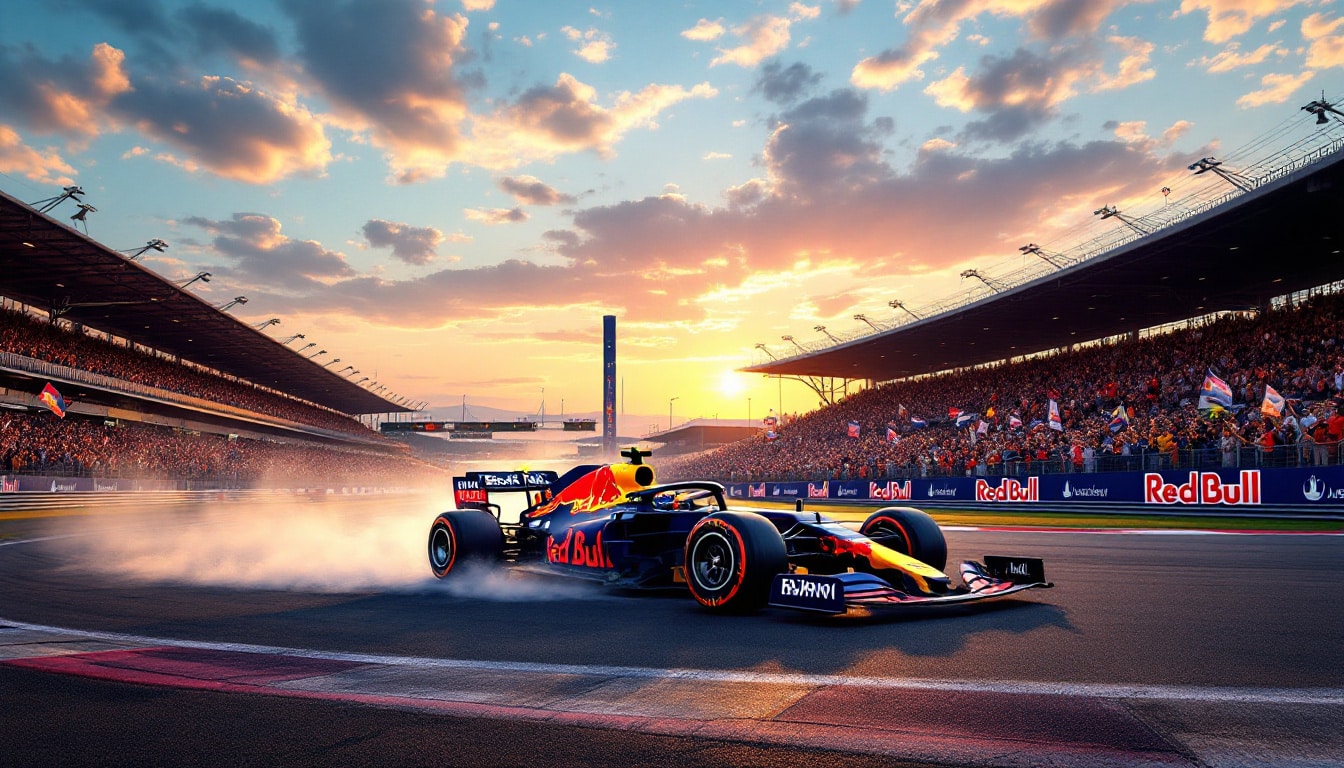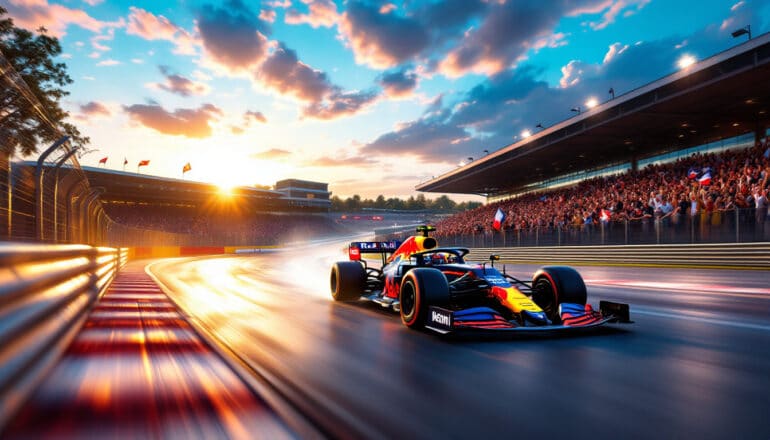As the engines roared back to life in Imola, the excitement around the Formula 1 circuit reached a fever pitch. After a stunning setback in Miami, Red Bull’s performance ignited questions about Max Verstappen’s championship aspirations. Could this turn of events signal a resurgence for the Dutch driver in his pursuit of glory?
The stunning backdrop of Imola, with its blend of speed and technical challenge, catalyzed a dramatic shift in the competitive landscape. Where Miami saw a sea of orange, the racetrack in Italy painted a more varied picture, as the blue of McLaren met the relentless charge of Red Bull. The weekend revealed critical insights as the two teams clashed, each showcasing their strengths and weaknesses.
What made the difference for Verstappen? This race introduced a new chapter in the ongoing rivalry, especially considering the evolution of the RB21 and its adeptness in high-speed corners. How had the dynamics shifted in just a fortnight, leading to such differing performances on the two distinct circuits? The answers emerged as the race unfolded, setting the stage for an exhilarating title chase.

Red Bull Racing has experienced a noticeable shift in momentum recently, propelling them to the forefront of the 2025 Formula 1 season. Key to this resurgence is none other than the remarkable talent of Max Verstappen, a driver known for his relentless pursuit of victory and ability to extract the utmost from his machine. But the question that looms large now is whether this newfound dominance can be sustained.
In the world of Formula 1, changes can come rapidly, and a team’s success often hinges on numerous factors, from technical advancements to strategic decisions. With other teams like McLaren and Ferrari continuously developing their cars, Red Bull will need to maintain a steady pace in innovation and adaptability to retain their competitive edge. Furthermore, Verstappen’s performance must align with the car’s capabilities to keep them at the top.
What factors contributed to Red Bull’s recent success?
Several facets have played a significant role in Red Bull’s reascendance, beginning with the inherent speed of the new RB21. This car has demonstrated exceptional performance, particularly in high-speed corners. Red Bull’s engineering team has worked tirelessly to enhance the car’s aerodynamics, resulting in improved cornering speeds that have given them an advantage on tracks like Imola.
Additionally, the team made strategic calls regarding upgrades which were effectively timed throughout the beginning of the season. The capitalizing on opportunities during races and executing pit stops with precision has also bolstered their performance. The technical updates to the RB21, particularly around aerodynamics and engine reliability, have evidently contributed to their improved standings.
“When we assessed the data, it became clear that we knew how to make the car faster in high-speed sections,” explained Red Bull’s Technical Director. This translates to a car that not only performs optimally during qualifying sessions but also holds strong during the races. The confluence of technical prowess and strategic execution has been crucial for Red Bull in reclaiming its status as a title contender.
Can Verstappen maintain his performance levels?
Max Verstappen is not just a driver; he is a formidable force in Formula 1. His extraordinary ability to connect with the car and anticipate every twist and turn of the track illustrates why he is often regarded as one of the best in the sport. Yet, the question arises: will he be able to remain consistent as the season unfolds?
The potential for pressure to mount cannot be ignored. As he continues to stake his claim for the championship, Verstappen will face not only competitive drivers but also the weight of expectations that accompany his position. Throughout the early races, he has shown that he is more than capable of handling the pressure, but the key will be to avoid mistakes and capitalize on every opportunity that arises.
Furthermore, Verstappen must continue to communicate effectively with his engineering team. Subtle changes in car setup, tire management strategies, and real-time feedback during races can significantly influence his performance. “We’ve learned how to optimize the car’s capabilities,” he commented recently. This adaptability could prove essential in the coming months as rival teams enhance their developments.
What challenges lie ahead for Red Bull?
Despite their current trajectory, substantial challenges await Red Bull. Rivals like McLaren and Ferrari are not standing idle; they are continuously improving and closing the gap. The ongoing development race is unfurling, and both teams have resources to implement rapid changes. Each team is looking to unveil new upgrades that could drastically alter the competitive landscape of the season.
Tire management and car adaptability during variable racing conditions also present significant hurdles. Races often pivot on how well a team can adjust its strategy based on tire performance and weather changes. Red Bull has to ensure that their setup can accommodate a wide range of track conditions; versatility could either solidify their standing or lead to a sharp decline if not managed correctly.
Moreover, Verstappen’s own physical and mental stamina is essential. Racing demands high levels of concentration and quick decision-making, and a taxing schedule can take its toll. Should he face any setbacks, whether burnout or injury, that could jeopardize both his and the team’s performance.
How does the competitive landscape influence Red Bull’s future?
The competitive nature of modern Formula 1 is the backdrop that shapes a team’s success or failure. With teams becoming more proficient at data analysis and aerodynamics, the fine margins between success and failure have diminished. Red Bull’s resurgence coincides with a more competitive grid where every team is striving for its piece of the podium.
As the chase for championship points intensifies, the importance of collaboration and synergy between drivers and engineers expands exponentially. A well-oiled team that capitalizes on strengths and minimizes weaknesses can outperform competitors—even those with superior machinery.
The landscape is also influenced by factors beyond mere performance. Political maneuvering within teams and discussions regarding future regulations could alter the distribution of power among teams in upcoming seasons. For instance, decisions regarding budget caps or technical directives from FIA may shift how teams allocate resources and strategize for races.
The mental game is just as important as the physical one. Verstappen, with his past experiences, must navigate the mental strain that comes with being in lead contention. The battles on track must also consider the psychological warfare against opponents, where every move can be scrutinized and second-guessed.
If Red Bull and Verstappen can navigate these multifaceted challenges and maintain their current trajectory, they stand a strong chance of remaining at the forefront of the championship discussion. However, as with any sport, uncertainty is a constant companion, and the racing world is ever-evolving.
For more insights into the latest developments in Formula 1, including the challenges faced by other teams, check out articles on recent winners and losers and Fernando Alonso’s strategic updates.


